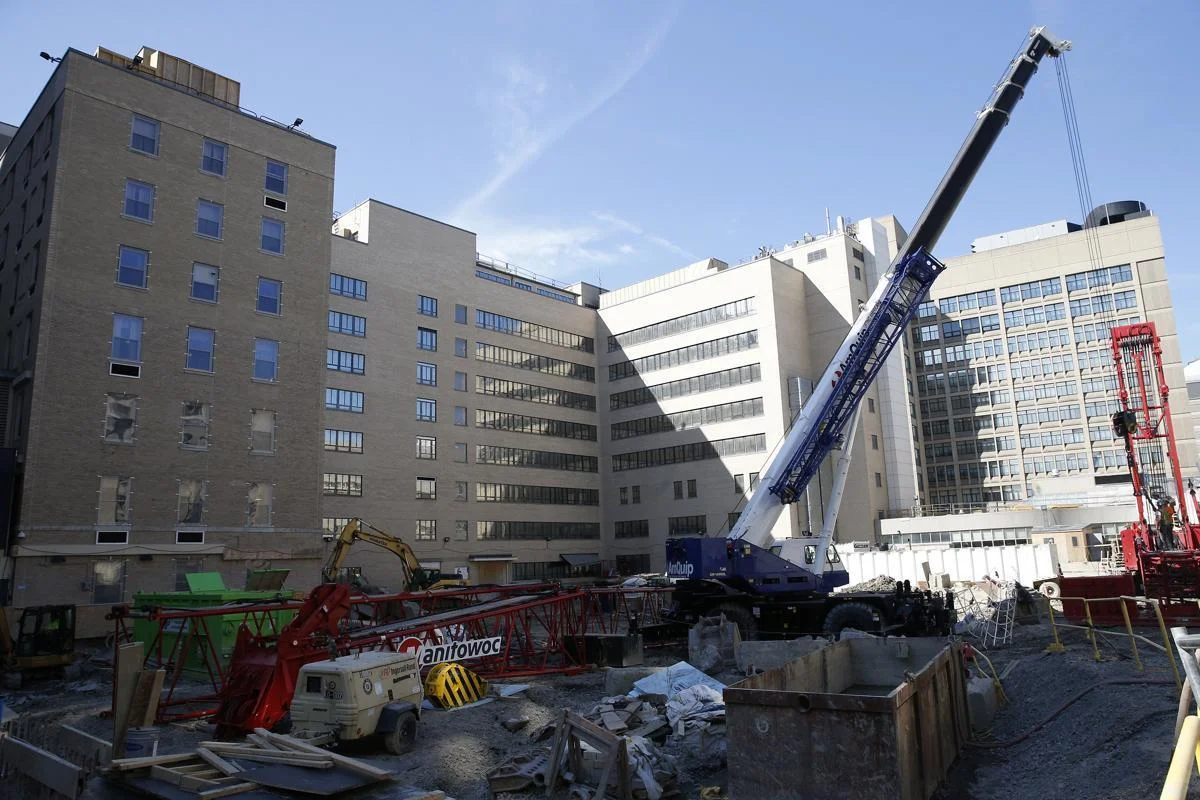This week, Boston Children's Hospital unveiled its new rooftop garden. The space contains a small patch of grass, paved walkways, tables and chairs, and some potted plants.
(photo credit: Boston Metro)
The opening has received coverage in the Boston Globe, CBS Boston, Boston Metro, and elsewhere.
From the Boston Globe story by Priyanka Dayal McCluskey:
The 8,000-square-foot space is 11 stories up, on the hospital’s main building on Longwood Avenue. There are scattered reminders of the Prouty here — sculptures of a nurse and child, a fox, a frog — but this modern garden is not likely to be mistaken for its predecessor.
A floor of pavers and wood surrounds a lush grassy knoll. Young perennials and grasses are planted in perfect rows.
There are no squirrels or bunnies or other critters here, as there were in the Prouty Garden. And there are no big trees.
This is Not a Healing Garden
While the new space might be nice, it's important to point out that this in no way qualifies as a healing garden. It's not the mere lack of a tall tree or bunnies. There are certain characteristics that every therapeutic healing garden must contain, and even rooftop gardens can have these features.
Things like: being serene, soothing and quiet in every sense. This garden has little shade, and visitors must content with sun, wind, and the noise of helicopters landing nearby.
Immersive. A healing garden must be large enough for one to feel surrounded by nature. There must be more vegetation than paved areas. It must be large enough to not constantly feel overcrowded by the presence of a small number of people.
Privacy. Some of the most important aspects of Prouty were the variety of small, secluded areas where visitors could have a private moment, difficult conversation, phone call, or just respite from the constant scrutiny of hospital lights.
Invites exploration through a water feature, subspaces, surprise and whimsy.
For more on what constitutes a therapeutic healing garden, please read this excellent report by landscape architect Thomas Paine, who designed a portion of Prouty Garden.
Missed Opportunity
Healing gardens atop hospital roofs are possible. The Olson Family Garden at St. Louis Children's Hospital is one such example. It is the same square footage as BCH's new space, yet offers subspaces, privacy, invites exploration, and appears to contain at least an equal rate of vegetation to paved areas:
The Olson Family Garden provides a retreat for patients and families. In addition to a variety of places to sit and rest, including a swing, benches and small coves, children enjoy crafts, puppet shows and performances by storytellers. Other features include waterfalls, winding paths and steppingstones that take garden visitors from fountains to flowerbeds to ponds filled with goldfish and views of nearby Forest Park.
Better Than Nothing?
The original Prouty Garden has been demolished, despite an enormous outcry from hospital staff, patients and patient families, world-renowned experts, and the public at large.
Remember that this space atop the Berthiaume Family Building has been available space for this kind of a rooftop experience for many years. We could have had this in addition to Prouty, if the hospital administration had been committed to preserving the mature and historic healing garden it already had. There were more than a dozen other options for this new tower; meanwhile the Prouty Garden has served for decades as a national model for what a hospital healing garden could be. Past administrations have been proud to call the Prouty Garden BCH's own, touting it in their marketing videos and elsewhere.
So, while it's wonderful that there is now a neatly manicured space for people to sit and eat lunch, enjoying nice views of Boston, there remains a massive and critical hole for a healing garden at BCH. Our supporters know all too well the vital, life-saving, soul-affirming importance of a therapeutic healing garden at Boston Children's Hospital.


